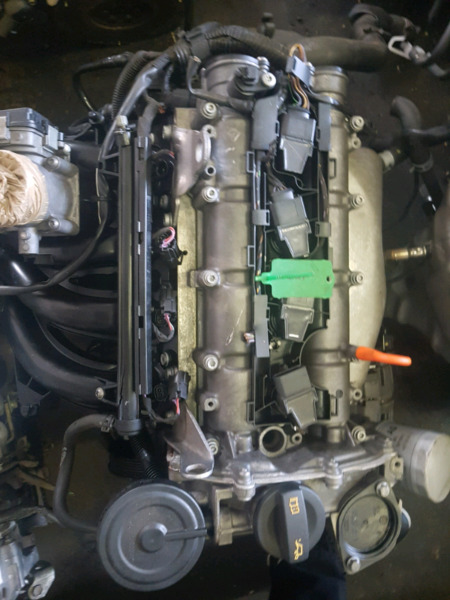How a Clp Engine Can Boost Performance in Various Industries
The arrival of CLP engines marks a significant change in functional effectiveness throughout different fields, driven by their ability to enhance gas usage and minimize downtime. Industries such as manufacturing and logistics stand to obtain significantly from their durable design and constant power output, which guarantee to simplify operations and boost productivity. As companies significantly prioritize sustainability along with efficiency, the function of CLP engines comes to be a lot more important. What stays to be seen is just how these innovations will form the future landscape of commercial procedures and their effect on wider financial fads (clp engine).
Introduction of CLP Engines
CLP engines, or Continuous Liquid Propellant engines, represent a significant innovation in propulsion modern technology, specifically for area applications. These engines utilize a continuous feed system that allows for the continual expulsion of propellant, bring about boosted performance and efficiency compared to conventional solid or hybrid propulsion systems. By maintaining a constant circulation of fluid propellant, CLP engines can achieve more precise drive control, which is vital for navigating spacecraft in numerous objective scenarios.
The layout of CLP engines integrates advanced products and innovative gas management systems. clp engine. This causes decreased weight and raised dependability, important variables for long-duration area goals. The continual operation lessens the risk of burning instability, an usual difficulty in standard rocket engines.

Advantages in Production
The production of Constant Liquid Propellant (CLP) engines presents several notable benefits that boost both performance and cost-effectiveness. Among the main benefits is the streamlined manufacturing procedure, which minimizes the complexity connected with conventional propulsion systems. By utilizing fluid propellant, suppliers can attain better accuracy in engine efficiency, causing enhanced energy output and lowered waste.
In addition, CLP engines promote a higher degree of modularity, permitting simpler combination into numerous production lines. This adaptability can substantially reduce lead times and enhance total functional versatility. The use of CLP technology additionally has a tendency to minimize the need for considerable upkeep as a result of less moving parts, which converts right into reduced downtime and functional costs.

Applications in Logistics
Leveraging Constant Fluid Propellant (CLP) engines in logistics uses significant advantages in operational efficiency and dependability. These engines supply a durable remedy for numerous transport needs, enabling the smooth activity of items throughout huge distances. The fundamental design of CLP engines permits consistent power result, which converts right into smoother and a lot more predictable transportation schedules.
Among the crucial applications of CLP engines in logistics remains in heavy-duty freight transportation, where they can drive both ground and airborne cars. Their ability to maintain high efficiency under differing load problems makes certain that shipment timelines are satisfied, thereby boosting consumer fulfillment. Furthermore, CLP engines can be integrated into automated logistics check my site systems, facilitating real-time tracking and maximizing path planning.
Moreover, the sturdiness of CLP engines decreases maintenance downtime, permitting logistics business to maximize their operational capacities. This is especially helpful in warehousing procedures, where effectiveness in dealing with and carrying goods is essential. As logistics continues to advance, the combination of CLP engines represents a forward-thinking method that not only improves efficiency but additionally supports the sector's growing needs for reliability and rate.
Effect On Power Efficiency
Exactly How do Continual Liquid Propellant (CLP) engines boost energy performance in transportation? CLP engines use a consistent circulation of fluid fuel, maximizing combustion procedures and maintaining a secure drive output. This layout lessens energy losses connected with typical combustion engines, where fuel shipment can vary and bring about ineffectiveness.
The continuous procedure of CLP engines permits a much more effective thermal cycle, causing higher details impulse compared to standard engines. clp engine. This equates to lowered fuel intake for the same quantity of work done, significantly reducing operational expenses throughout different transport industries, consisting of aviation and maritime industries
Additionally, the capacity of CLP engines to maintain optimal efficiency under differing load conditions minimizes the demand for frequent velocity and slowdown, better boosting fuel efficiency. Improved energy performance not just adds to cost savings but likewise brings about decrease greenhouse gas emissions, aligning with global sustainability goals.
Future Trends and Innovations
Emerging innovations in Continual Fluid Propellant (CLP) engine modern technology promise to revolutionize the landscape of transportation performance and sustainability. As sectors pivot towards greener choices, CLP engines stand at the More hints center, incorporating cutting-edge products and layout techniques that boost performance while lessening environmental impact.
One of one of the most appealing patterns is the adoption of hybrid systems that incorporate CLP engines with eco-friendly visit here power sources. This harmony can enhance fuel usage and reduce exhausts, lining up with global sustainability objectives. Developments in computational liquid dynamics (CFD) are assisting in the style of more aerodynamically reliable engines, leading to decreased drag and boosted fuel performance.
Additionally, the growth of smart surveillance systems is readied to boost operational effectiveness. These systems leverage data analytics and IoT modern technology to enhance engine efficiency in real-time, guaranteeing that the engines run within their most efficient specifications.
As research study proceeds to check out alternative propellant solutions-- such as biofuels and synthetic fuels-- the future of CLP engines looks appealing. By using these innovations, markets can not only improve their performance but likewise contribute considerably to a cleaner, much more lasting future in transportation.
Final Thought
In conclusion, CLP engines stand for a significant improvement in performance throughout several industries. The combination of innovative materials and fewer relocating parts lessens upkeep requirements, while alignment with sustainability objectives positions CLP engines as an essential technology for the future.
Comments on “Ensure smooth operations with a properly serviced clp engine.”